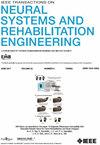Forecast Padding Enhances Accuracy and Robustness of EEG-Phase-Synchronized TMS
IF 5.2
2区 医学
Q2 ENGINEERING, BIOMEDICAL
IEEE Transactions on Neural Systems and Rehabilitation Engineering
Pub Date : 2025-07-10
DOI:10.1109/TNSRE.2025.3587711
引用次数: 0
Abstract
Closed-loop neuromodulation is a promising personalized treatment for various neuropsychiatric disorders, delivering precise stimuli based on real-time brain signals. However, its clinical potential is currently limited by technical challenges inherent in its real-time nature. This article addresses the primary technical challenges in EEG-Phase-Synchronized Transcranial Magnetic Stimulation (TMS), including poor stimulation accuracy and inefficient biomarker detection (correlated with deadlock). These challenges arise from the vulnerability of existing algorithms to filter edge effects. Inspired by predictive coding theory in neuroscience, we propose a novel signal padding method (forecast padding) to mitigate the filter edge effect. To properly quantify the improvements that forecast padding brings about in real-world systems, we introduce a novel delay-relevant validation framework and demonstrate its reliability using experimental data from a real system. Through this framework, we demonstrate that forecast padding significantly improves both stimulation accuracy and deadlock rate. Given the pervasive impact of filter edge effects in closed-loop neuromodulation and other signal processing domains, forecast padding shows broad application potential across various fields.预测填充提高脑电同步TMS的准确性和鲁棒性。
闭环神经调节是一种很有前途的个性化治疗各种神经精神疾病,提供精确的刺激基于实时大脑信号。然而,它的临床潜力目前受到其实时性固有的技术挑战的限制。本文讨论了脑电图相同步经颅磁刺激(TMS)的主要技术挑战,包括刺激准确性差和生物标志物检测效率低(与死锁相关)。这些挑战来自于现有算法在过滤边缘效果方面的脆弱性。受神经科学预测编码理论的启发,我们提出了一种新的信号填充方法(预测填充)来减轻滤波器边缘效应。为了正确量化预测填充在现实系统中带来的改进,我们引入了一种新的延迟相关验证框架,并使用来自真实系统的实验数据证明了其可靠性。通过这个框架,我们证明了预测填充显著提高了增产精度和死锁率。考虑到滤波器边缘效应在闭环神经调节和其他信号处理领域的普遍影响,预测填充在各个领域显示出广泛的应用潜力。
本文章由计算机程序翻译,如有差异,请以英文原文为准。
求助全文
约1分钟内获得全文
求助全文
来源期刊
CiteScore
8.60
自引率
8.20%
发文量
479
审稿时长
6-12 weeks
期刊介绍:
Rehabilitative and neural aspects of biomedical engineering, including functional electrical stimulation, acoustic dynamics, human performance measurement and analysis, nerve stimulation, electromyography, motor control and stimulation; and hardware and software applications for rehabilitation engineering and assistive devices.

 求助内容:
求助内容: 应助结果提醒方式:
应助结果提醒方式:


